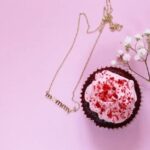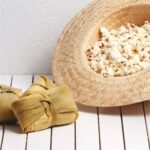Cake decorations play a crucial role in elevating the visual appeal of baked goods, especially during special occasions such as birthdays, weddings, and celebrations. These embellishments not only enhance the overall look of a cake but also provide a personal touch that can make any event more memorable. From intricate designs to simple accents, cake decorations come in various forms that cater to different tastes and preferences.
The history of cake decorations dates back centuries, with early civilizations incorporating edible adornments like fruits and nuts on their baked goods. Over time, cake decoration techniques have evolved, leading to the use of icing, fondant, and other innovative materials to create stunning designs on cakes. Today, the art of cake decorating has blossomed into a vibrant industry with professionals and enthusiasts constantly pushing boundaries to showcase their creativity.
When it comes to silver cake decorations, these metallic accents hold a special place in the culinary world for their elegant and sophisticated appearance. Silver cake decorations add a touch of glamour to any dessert, making them popular choices for formal events or celebrations. Whether in the form of edible silver dragees or non-edible silver ribbon trimmings, these shimmering embellishments are highly sought after for their eye-catching appeal.
History of Cake Decorations
Ancient Origins of Cake Decoration
Cake decorations have a rich history that dates back centuries. In ancient times, elaborate cakes were reserved for special occasions and celebrations amongst the wealthy and nobility. These early cakes were often adorned with fruits, nuts, and flowers as a way to showcase opulence and artistry. The art of cake decoration has evolved significantly since then, with new techniques and materials being introduced over time.
Evolution of Cake Decorating Techniques
As baking became more accessible to the general population, cake decorations took on new forms and styles. In the 17th century, marzipan was introduced as a popular medium for creating intricate cake designs. By the 19th century, royal icing became a staple for decorating wedding cakes with its smooth texture and ability to hold intricate shapes. The invention of food coloring in the 19th century also revolutionized cake decorating by allowing for vibrant designs and patterns.
Modern Trends in Cake Decoration
Today, cake decoration has reached new heights with the use of fondant, gum paste, and edible printed images. From weddings to birthdays to holidays, cakes are now adorned with elaborate designs that range from simple elegance to whimsical creativity.
With the rise of social media platforms like Instagram and Pinterest, cake decorators have found new ways to showcase their skills and inspire others with innovative techniques and styles. As we look back on the history of cake decoration, it is clear that this art form continues to evolve and captivate people around the world.
Types of Cake Decorations
Silver cake decorations can come in various forms, such as edible silver leaf, silver dragees, or silver luster dust. Edible silver leaf is delicate sheets of pure silver that can be carefully placed on cakes or desserts for a luxurious finish.
Silver dragees are small edible balls coated in a shiny silver finish, adding texture and shine to baked goods. Silver luster dust is a powdered form of edible shimmer that can be brushed or airbrushed onto cakes for a subtle metallic sheen.
In addition to their aesthetic appeal, silver cake decorations are also versatile in terms of themes and occasions. Whether it’s a wedding cake needing a touch of sparkle or a holiday dessert requiring some festive flair, silver decorations can complement any design. Professional bakers and home bakers alike can experiment with different techniques and applications to enhance their cakes with these shimmering elements.
| Silver Cake Decoration Type | Description |
|---|---|
| Edible Silver Leaf | Delicate sheets of pure silver for luxury finish |
| Silver Dragees | Small edible balls coated in shiny silver for texture |
| Silver Luster Dust | Edible shimmer powder for metallic sheen on cakes |
Importance of Silver Cake Decorations
Silver cake decorations have always held a special place in the culinary world, adding an elegant touch to various cakes and desserts. Their popularity stems from the aesthetic appeal they bring to any baked creation, making them a go-to choice for many bakers and confectioners. The shimmering silver hue of these decorations instantly elevates the visual presentation of a cake, making it stand out and catch the eye of anyone who beholds it.
Enhancing Visual Appeal
One of the primary reasons why silver cake decorations are highly sought after is their ability to enhance the visual appeal of any cake or dessert. Whether it’s a simple birthday cake or an elaborate wedding cake, silver decorations can instantly add a touch of sophistication and glamour to the presentation.
From shimmering silver edible pearls to intricately designed silver fondant shapes, these decorations have the power to transform a plain-looking cake into a stunning masterpiece fit for any special occasion.
Versatility in Design
Another reason for the popularity of silver cake decorations is their versatility in design. Silver decorations come in a wide range of options, allowing bakers and decorators to choose from an array of styles, shapes, and sizes.
Whether you’re looking for small silver dragees to sprinkle on top of cupcakes or delicate silver foil sheets to wrap around a tiered cake, there is no shortage of choices when it comes to silver cake decorations. This versatility allows for endless creative possibilities, ensuring that every baked creation can be uniquely adorned with silver accents.
What Is a Silver Cake Decoration Called
Silver cake decorations add a touch of elegance and sophistication to any dessert, making them popular choices for special occasions such as weddings, birthdays, and anniversaries. These shimmering adornments can elevate the overall look of a cake and create a beautiful focal point that grabs the attention of guests. One of the most sought-after types of cake decorations in the culinary world is silver cake decorations, known for their stunning appearance and versatility in design.
So, what is a silver cake decoration called? The specific name for these radiant embellishments is “dragees.” Dragees are small, ball-shaped sugar confections that are typically coated in metallic finishes like silver, gold, or pearl. These edible decorations are commonly used to add a touch of glamour to cakes, cupcakes, cookies, and other baked goods. In addition to their decorative purpose, dragees also provide a delightful crunch and slight sweetness when consumed.
When it comes to selecting the perfect silver cake decoration for your dessert masterpiece, there are various options to choose from. From edible silver luster dust and edible silver leaf sheets to non-edible metallic sugar pearls and edible silver dragées, each type offers a unique aesthetic appeal that can be tailored to suit different themes and styles.
Whether you prefer a subtle hint of silver or a dazzling display of shimmering accents on your cake, incorporating silver cake decorations can truly make your creation stand out.
| Types of Silver Cake Decorations | Description |
|---|---|
| Edible Silver Luster Dust | A fine powder that can be dusted or painted onto cakes for a metallic sheen. |
| Edible Silver Leaf Sheets | Thin sheets of real silver that can be carefully applied to cakes for a luxurious look. |
| Metallic Sugar Pearls | Sugar pearls coated in edible metallic finishes like silver for added glamor. |
| Edible Silver Dragées | Small sugar confections with metal coatings in various shapes like balls or grains. |
DIY Silver Cake Decorations
When it comes to creating beautiful and unique cakes, adding your own personal touch with DIY silver cake decorations can make your baked goods stand out from the rest. Not only are homemade silver cake decorations cost-effective, but they also allow you to unleash your creativity and customize your desserts to match any theme or occasion.
Whether you’re a baking enthusiast looking to add a special flair to your creations or a novice baker wanting to explore a new skill, making silver cake decorations at home is an enjoyable and rewarding process.
To help you get started on your DIY silver cake decoration journey, here are some creative ideas and techniques to try:
- Using edible metallic paints or dusts: Transform ordinary fondant or gum paste into shimmering silver accents by painting them with edible metallic paints or dusts. Simply mix the metallic paint with a few drops of alcohol (such as vodka) to create a paint-like consistency and carefully brush it onto your fondant shapes.
- Molding with silver fondant: Purchase pre-colored silver fondant from baking supply stores or create your own by kneading gray food coloring into white fondant. Use silicone molds in various shapes like hearts, stars, or flowers to create intricate silver decorations that can be easily attached to your cakes.
- Creating silver dragees: Make edible silver dragees by coating small pieces of nuts or dried fruits with edible silver luster dust mixed with clear piping gel. These shiny spheres can add a touch of elegance when placed on top of cupcakes or sprinkled around the edges of larger cakes.
Embrace the artistry of DIY silver cake decorations by experimenting with different materials and techniques to achieve stunning results that will impress your friends and family at any celebration. The possibilities are endless when it comes to customizing your cakes with homemade silver embellishments, so don’t be afraid to let your imagination run wild and create one-of-a-kind masterpieces that will surely delight everyone’s taste buds.
Tips for Using Silver Cake Decorations
Silver cake decorations are a popular choice for adding elegance and sophistication to cakes for special occasions. Whether it’s a wedding, anniversary, or birthday celebration, silver cake decorations can elevate the look of any dessert. Knowing how to effectively use and showcase these decorations is key to creating a visually stunning cake that will impress your guests.
Here are some expert tips on how to make the most out of silver cake decorations:
- Choose the right size and style: When selecting silver cake decorations, consider the size and style of your cake. Opt for decorations that complement the overall design and theme of the cake.
- Placement is key: To showcase silver cake decorations effectively, consider the placement on the cake. Whether you want a scattered look or a more structured design, strategically placing the decorations can make all the difference.
- Pair with complementary colors: Silver cake decorations can be enhanced by pairing them with other colors that complement them. Consider incorporating shades of white, black, or pastel colors to create a cohesive and visually appealing design.
Using these tips, you can create a stunning cake that showcases silver decorations in an elegant and tasteful way. Experiment with different designs and techniques to find what works best for your specific occasion and theme. Remember, when it comes to decorating cakes with silver elements, attention to detail is key in creating a show-stopping dessert that will leave a lasting impression on your guests.
Conclusion
In conclusion, silver cake decorations play a crucial role in elevating the visual appeal of cakes and enhancing the overall aesthetic of special occasions. These shimmering embellishments have a long history in the culinary world, with their popularity only growing over time. From traditional weddings to modern birthday celebrations, silver cake decorations add a touch of elegance and sophistication to any event.
The versatility of silver cake decorations is truly remarkable, as they can be incorporated into a wide range of cake designs and themes. Whether it’s a simple sprinkle of silver dragees or intricate silver fondant accents, these decorations can transform a plain cake into a stunning masterpiece. The beauty of silver cake decorations lies in their ability to complement any color scheme or style, making them a go-to choice for bakers and confectioners alike.
So next time you’re planning a special event or simply want to add some sparkle to your baked creations, consider using silver cake decorations. Whether you opt for store-bought options or get creative with DIY techniques, these shimmering embellishments are sure to impress your guests and elevate your baking skills to new heights. Embrace the beauty and charm of silver cake decorations, and watch as they take your cakes from ordinary to extraordinary.
Frequently Asked Questions
What Is the Names of Cake Decorations?
Cake decorations come in a variety of names, depending on their forms and purposes. Some common names for cake decorations include sprinkles, edible pearls, fondant flowers, sugar plaques, icing roses, chocolate curls, and edible glitter.
What Is Another Name for a Cake Decorator?
Another name for a cake decorator is a pastry chef or baker who specializes in decorating cakes. These professionals have honed their skills in crafting intricate designs, piping frosting elegantly, and creating visually stunning cakes for all occasions.
What Are Other Names for Silver Dragees?
Silver dragees are also known by other names such as silver pearls, silver balls, or silver sugar beads. These small metallic ball-shaped decorations are often used to add a touch of elegance and sparkle to cakes, cupcakes, cookies, and other baked goods.

Welcome to my blog about home and family. This blog is a place where I will share my thoughts, ideas, and experiences related to these important topics. I am a stay-at-home mom with two young children. I hope you enjoy reading it! and may find some helpful tips and ideas that will make your home and family life even better!





